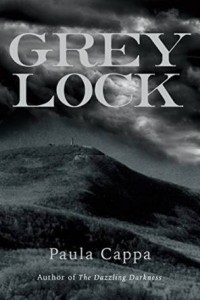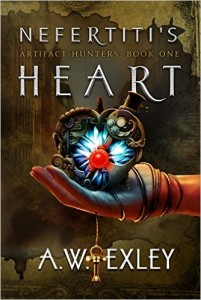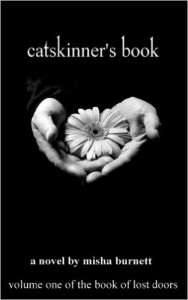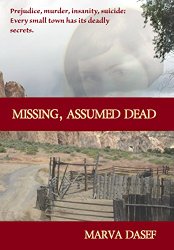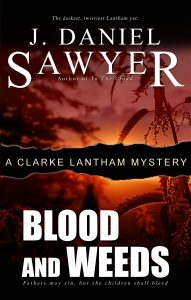 There seems, in my circles at least, to be a resurgence of noir-inspired fiction and I wholeheartedly embrace it. The Clarke Lantham series, by Dan Sawyer, is as good an example of neo-noir as I can think of. Not just a book about a private investigator set in first person, Sawyer also embraces the edginess, sex, and pulpy fun that characterizes the genre.
There seems, in my circles at least, to be a resurgence of noir-inspired fiction and I wholeheartedly embrace it. The Clarke Lantham series, by Dan Sawyer, is as good an example of neo-noir as I can think of. Not just a book about a private investigator set in first person, Sawyer also embraces the edginess, sex, and pulpy fun that characterizes the genre.
My favorite thing about this series as a whole is that each mystery’s hook is presented as something fantastical. Whether it’s aliens, ghosts, or vampires – Lantham is thrust into the fortean and squirms, thinks, kicks, and shoots to find answers. As a self proclaimed skeptic and lapsed Catholic, he struggles with those two natures and is left to deal with it as best he can. Often, the solution belongs to cutting edge science, but it’s no less strange and marvelous for all of that.
As the books progress, he befriends, adopts, and is adopted by a host of people at least as interesting as Lantham himself. One of those, his protege Rachel, stumbles on a mystery and it interweaves with a case Lantham is working on. Estranged by events in previous stories, they work together and try to save their friendship as well as a number of innocent lives.
There are two things this book does well that every one of the entries in this series does. The first is showing the business of private investigator in the most realistic way I’ve seen it done. No aspect of the cases is solved easily. Everything from the collecting of evidence to shadowing a suspect is portrayed as a struggle and the protagonists occasionally screw it up. That leads me to the second aspect – character. These people seem real to me. I’d not be surprised to meet Clarke or Rachel on the street one day. They make mistakes, perform their jobs well but aren’t virtuosos, and we get to know their emotional tics, love lives, and alcohol preferences.
I can’t recommend this series highly enough. I chuckled in a number of places throughout and the ending nearly left me an emotional wreck. There aren’t many books that do that to me.
About The Reviewer:
 Some creatures feed on blood and revel in the screams of their prey. Scott Roche craves only caffeine and the clacking of keys. He pays his bills doing the grunt work no one else wants to take, bringing dead electronics back to life and working arcane wonders with software. His true passion is hammering out words that become anything from tales that terrify to futuristic worlds of wonder. All that and turning three children into a private mercenary army make for a life filled with adventure.
Some creatures feed on blood and revel in the screams of their prey. Scott Roche craves only caffeine and the clacking of keys. He pays his bills doing the grunt work no one else wants to take, bringing dead electronics back to life and working arcane wonders with software. His true passion is hammering out words that become anything from tales that terrify to futuristic worlds of wonder. All that and turning three children into a private mercenary army make for a life filled with adventure.
Learn more about Scott and his works at http://www.scottroche.com.
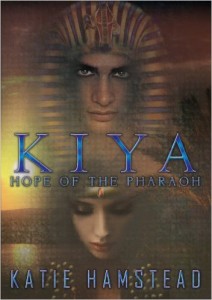
 Samantha Bryant is a middle school Spanish teacher by day and a mom and novelist by night. That makes her a superhero all the time. Her debut novel, Going Through the Change: A Menopausal Superhero Novel is now for sale by Curiosity Quills.
Samantha Bryant is a middle school Spanish teacher by day and a mom and novelist by night. That makes her a superhero all the time. Her debut novel, Going Through the Change: A Menopausal Superhero Novel is now for sale by Curiosity Quills.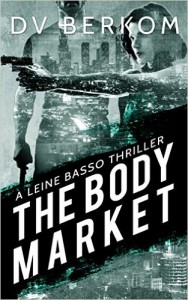
 Elisabeth Zguta is an advocate for Independent authors and publishers and encourages all writers to learn the skills needed for today’s book markets and to keep in touch with the new technologies.
Elisabeth Zguta is an advocate for Independent authors and publishers and encourages all writers to learn the skills needed for today’s book markets and to keep in touch with the new technologies.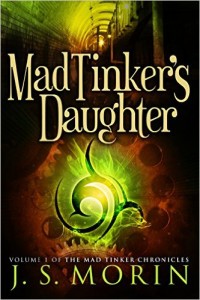

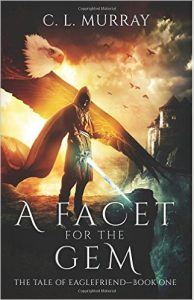
 It took Eduardo Suastegui a while to discover he was an artist trapped in an engineer’s body. With formal education in math and science, affirmed through hands-on engineering experience in designing, building, and integrating gadgets of varying complexity, he always kept daydreaming. Throughout his life, that daydreaming fed technological innovation.
It took Eduardo Suastegui a while to discover he was an artist trapped in an engineer’s body. With formal education in math and science, affirmed through hands-on engineering experience in designing, building, and integrating gadgets of varying complexity, he always kept daydreaming. Throughout his life, that daydreaming fed technological innovation.
